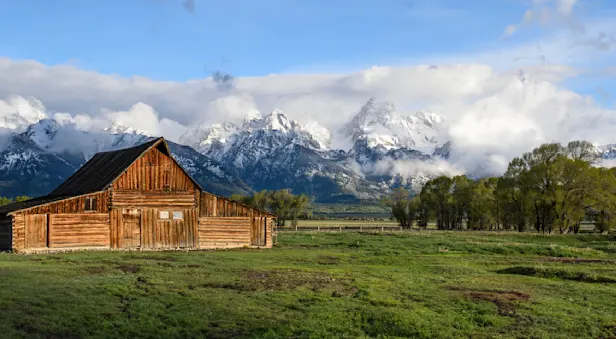Know Before You Go
Grizzly Bear Facts | Yellowstone Wildlife Guide
WHICH IS IT—BROWN OR GRIZZLY?
There is often confusion about what to call these bears, with the words “grizzly” and “brown” often used interchangeably.
Grizzly bears are a subspecies of the brown bear, so it is correct to call a grizzly a brown bear, but it is not always correct to call a brown bear a grizzly. The difference is regional. In coastal Alaska and Canada, they are called brown bears, and in interior areas like Yellowstone, they are generally called grizzly bears. This name comes from the grizzled gray and brown coat that interior brown bears often display.
In the United States, grizzly bears are only found in the Greater Yellowstone Ecosystem, parts of Montana and Idaho and occasionally in northern Washington. While they once roamed as far south as central Mexico, the fear invoked by their size and power led to eliminating them from much of their original range. Today only 150 bears make their home in the park, and nearly 700 bears live in the Greater Yellowstone Ecosystem (GYE). This is an increase from the 136 that were found in the GYE in 1975 when they were listed as “threatened” under the Endangered Species Act. The status of these bears is unclear, however, since brown bears require vast landscapes to support their needs, and it is unlikely that their environment will ever expand to their traditional range.
PHYSICAL CHARACTERISTICS
Grizzly bears are much larger than black bears, weighing up to 1,000 pounds. The average weight in the Yellowstone area is 300–700 pounds for males, and 200–400 pounds for females.
Grizzly bears have a large hump on their shoulders, which houses strong muscles that help them dig for roots, mushrooms and other foods. They also have long claws (up to 4 inches long) to help with these excavations. Their face is often described as “dish-shaped” to distinguish them from the elongated face of a black bear.
BEHAVIOR & FEEDING HABITS
Grizzly bears are solitary animals, except when breeding or when mothers are raising their young. They wander over many square miles to forage for food. In the GYE, pine nuts and other foods are critical for the bears to build their fat reserves in preparation for hibernation. Warmer temperatures in recent years have allowed diseases and beetles to spread, wiping out pines and greatly reducing the availability of this important food source. This is leading to more conflicts with humans as the bears look for alternative sources of food, like trash dumps.
Hibernation generally takes place from November to March in Yellowstone (shorter farther south, and longer farther north). As with black bears, they enter a period of hyperphagia in the months leading up to hibernation and put on several pounds of fat every day. If a female has a fertilized egg, implantation in the uterus will be delayed until December and will only occur if the mother has gained enough weight to support herself and her babies until the spring.
Once the hungry bears leave their winter dens, the carcasses that were left behind either by harsh winter conditions or the predation of wolves are their primary food. They will also hunt young elk that are still small and vulnerable. As the summer progresses and young elk gain in strength and speed, they switch their feeding to easier prey of grubs, mushrooms, plants and berries.
GRIZZLY-WOLF INTERACTIONS
For the most part, grizzlies and wolves avoid each other. However, wolf kills are an important source of protein for grizzly bears, as wolves are far better hunters. Because of this, the reintroduction of wolves to the park has been beneficial to grizzly bears. If a bear decides to take over a kill from a pack of wolves, it is very unlikely that the wolves will be able to displace the bear unless there are cubs present. A mother with cubs will often leave a kill to protect her young.
Header Credit: Henry Holdsworth
See Yellowstone's Grizzlies on These Trips

Yellowstone & Grand Teton Photo Expedition
Led by top photographers who are some of Yellowstone's most seasoned naturalist guides, seek shots of bison, elk, moose, bears, wolves and more, plus legendary landscapes, on a peerless national park photo safari.
























